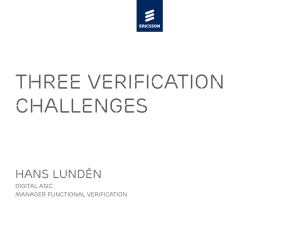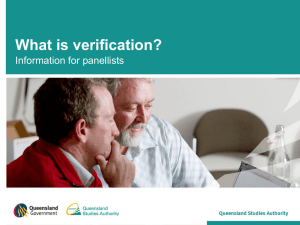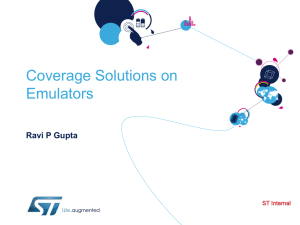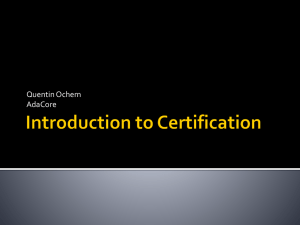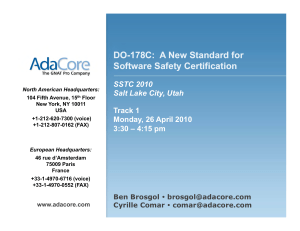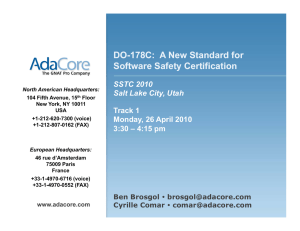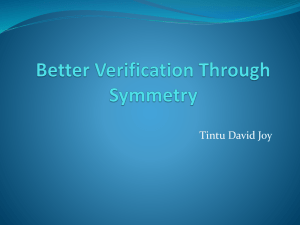DO-178B and DO-178C Software Considerations in Airborne
advertisement
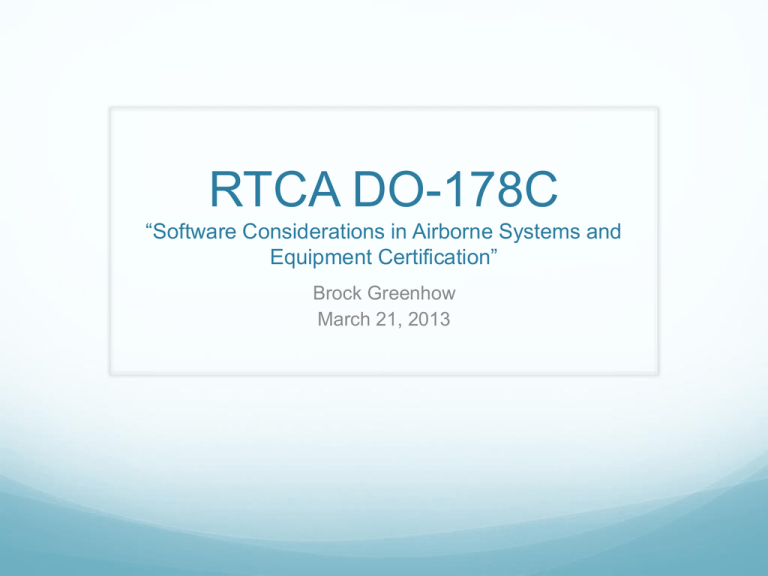
RTCA DO-178C “Software Considerations in Airborne Systems and Equipment Certification” Brock Greenhow March 21, 2013 Software mishaps in Aerospace Engineering Ariane Five rocket explosion Southern Airways 242 Gimli Glider Patriot Missile Future of Safety Critical Software Increased lines of code Increased complexity Increased criticality Technology changes More with less Increased outsourcing and offshoring Attrition of experienced engineers Lack of available training Background of DO-178 1982 – DO-178 1985 – DO-178A 1992 – DO-178B 2001 – DO-248B 2011 – DO-178C and supplemental material 2011 – DO-248C Differences from DO-178B to C Added examples and explanations Used clearer language and terminology Added more objectives Bi-directional tracing Parameter Data Item Files Technology Supplements ARP4754A System Development System Requirements Allocate requirements to software Validate requirements Communication Plan for changes to come from software ARP4761 Aircraft and System Safety Safety Program Plan FHA and SFHA’s PASA and PSSA’s Software Safety Improves with time Errors are not as obvious Need specific requirements Involve safety and systems in software requirement reviews Safety continued Severity Classification Potential Failure Condition Effect Assurance Level Catastrophic Failures would result in multiple fatalities and possible complete loss of the airplane. A Hazardous/Severe major Failures would reduce the abilities of airplane or crewmembers to deal with conditions that could result in reduction of safety margins, distress and excessive workload, or even serious or fatal injuries to a small number of people. B Major Failures would cause similar to issues to the Hazardous/Severe major, but not as severe and likely only injuries and not casualties. C Minor Failures would not significantly reduce airplane safety, and only slight increase of workload and minimal discomfort. D Failures have no effect on the safety of the aircraft. E No safety effect Safety Continued Level Objective Count Objectives with independence E 0 0 D 26 2 C 62 5 B 69 18 A 71 30 Overview of DO-178C Software Planning Software Requirements Software Design Software Integration Software Verification Software Configuration Management Software Quality Assurance Software Certification Software Planning Five Plans PSAC SDP SVP SCMP SQAP Three Standards Software Requirement Standards Software Design Standards Software Coding Standards Software Requirements Foundation to good software Refine Systems Requirements Allocate enough time Software Requirement Cycle Bi-Directional Tracing Baseline SWRD Software Design Architecture Structural-based Object-oriented Low-level Requirements Bi-Directional Tracing SWDD Software Implementation Coding Languages and compilers Good programming Standards Traceability Integration Build process Load process Analyze memory and addresses Software Verification Reviews Plans, requirements, design, test data Analyses Code and integration Coverage Other Tests RBTs, integration Cases, procedures, results Tracing Software Verification Continued Verification of Verification SCA, MC/DC Test data reviews Problem Reporting Failures become PR or CR PR or CR process CIA SVCP Software Configuration Management Beginning to End All life cycle data CC1 or CC2 SCI Life cycle data and versions SLECI and Problem Reporting Software Quality Assurance Customer’s needs Review plans and write SQAP Life cycle data audits and approval Reviews Witness tests, builds, and loads Problem reporting Conformity review Document activities for records Software Certification Develop and submit PSAC PSAC approval Submittal and approval of SCI and SAS SOIs Supplemental Materials DO-330 Software Tool Qualification DO-331 Model-Based Development and Verification DO-332 Object-Oriented Technology DO-333 Formal Methods Software Tool Qualification Separate Document compared to DO-178B Three criteria TQL Life Cycle similar to whole software Tool verification Reviews RBTs Model-Based Development and Verification 2 types of Models Specification Design Benefits Potential Risks Object-Oriented Technology Most popular Additional/Modified objectives Plans Development Verification Vulnerability guidance Formal Methods Changes Plans Verification objectives Benefits Challenges Sources Pictures http://blog.copdfoundation.org/wp-content/uploads/2012/09/C-Users-sschlegelPictures-Question-Mark-Man.jpg Information Rierson, L. (2013). Developing safety-critical software. Boca Raton, FL: CRC Press. Jacklin, S. A. NASA, (2012). Certification of safety-critical software under do-178c and do278a . Retrieved from Ames Research Center website: http://ntrs.nasa.gov/search.jsp?R=20120016835 Arnold, D. (2000, August 23). The explosion of the ariane 5. Retrieved from http://www.ima.unm.edu/~arnold/disasters/ariane.html Arnold, D. (2000, August 23). The patriot missile failure. Retrieved from http://www.ima.unm.edu/~arnold/disasters/patriot.html Nelson, W. H. (1997). The gimli glider. Retrieved from http://www.wadenelson.com/gimli.html Fleury, M. K. (2009, April 29). Crash of southern airways flight 242, georgia. Retrieved from http://suite101/article/crash-of-southern-airways-flight-242-a113420 Questions?


